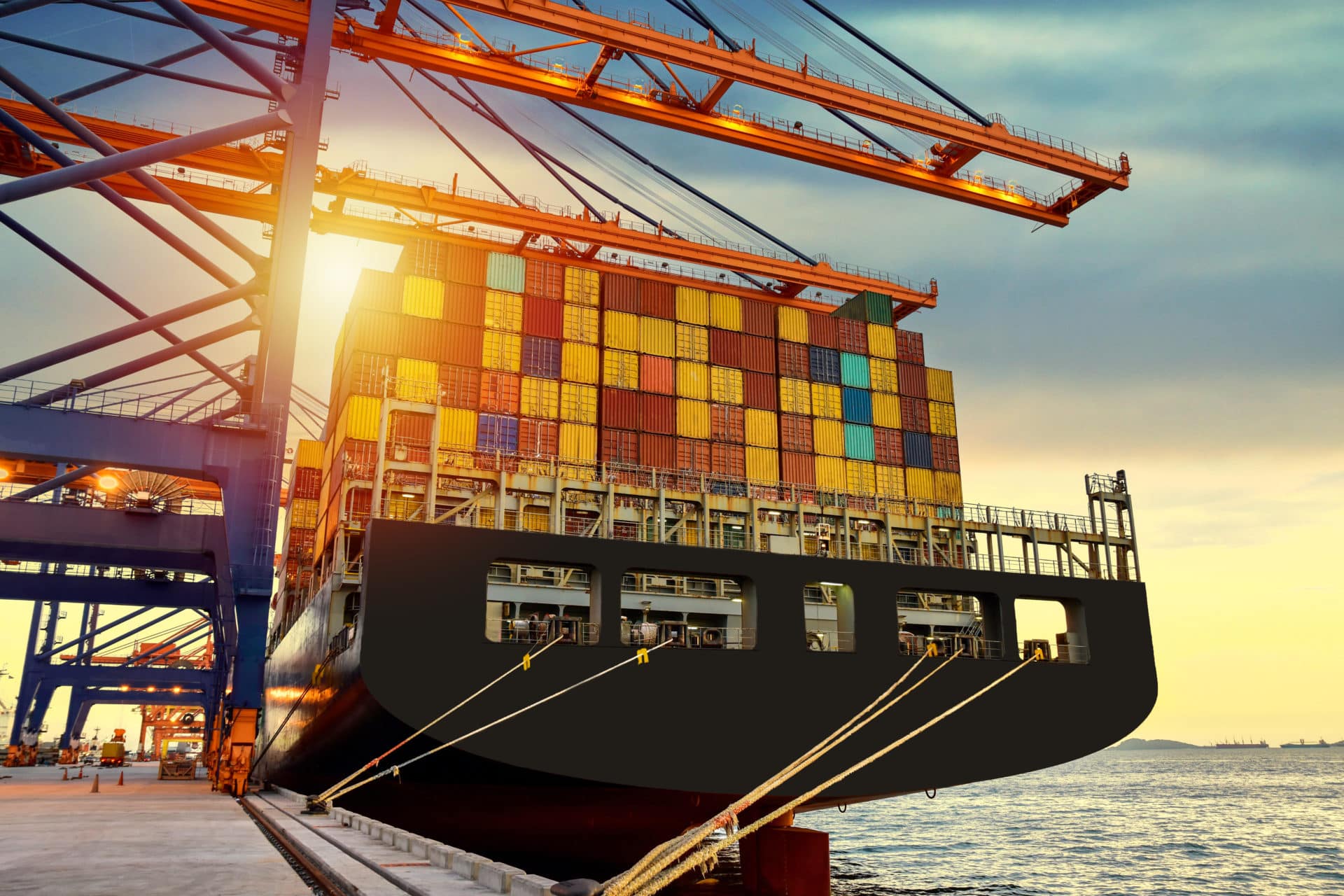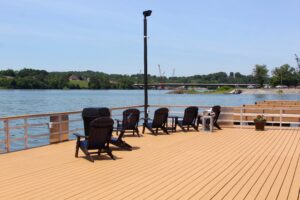When shipping large exports overseas, businesses must take into careful consideration their approach. Ocean freight is sectioned by two main divisions of cargo: Full Container Load (FCL) and Less than Container Load (LCL). Both types carry unique pros and cons that make them ideal for specific shipping needs.
Below, we’ll cover the differences between both types of agreements, as well as their main features that should be considered when choosing how to ship.
Full Container Load
Typically best for companies with large amounts of standing stock, a FCL (Full Container Load) refers to when an entire cargo container is reserved for the same buyer, regardless if it’s completely filled. This is often the choice when priority goes to speed and safety.
Benefits of Full Container Load
When choosing to ship Full Container Load vs LCL, the buyer enjoys several immediate benefits to having the entire box reserved only for their cargo. Immediately, shipping times are usually much shorter due to the shipment being straightforward. The whole container is packed at one location, shipped, and unloaded at another. There are no stops in between to separate or sign for other buyer’s goods.
There is also a lower risk of lost or stolen goods, as the cargo is uninterrupted by stops and is not sharing container space.
Drawbacks of FCL
Due to high demand, FCLs are often far more expensive surrounding Chinese holidays (such as the Lunar New Year) when shipping overseas. Additionally, if you don’t have enough cargo to completely fill the container to the gills, there may be extra space for things to shift around during shipping. This may lead to damaged goods if they are not properly secured.
Less than Container Load
Less Than Container Loads typically boast a lower cost due to your cargo only taking up a portion of the box. This makes them more ideal for businesses looking to ship smaller amounts of cargo, or when the cargo needs to be delivered to multiple locations.
LCLs are most ideal for shipments under 15 CBM (Cubic Meters), but often require a minimum of 1 CBM of cargo.
Less than Container Loads are typically the choice when the priority is cost, or there is a need for multiple delivery destinations.
Benefits of Less than Container Load
When buying container space per cubic meter filled, a Less than Container Load will almost always come out to be cheaper than a Full Container Load, at least up to 15 CBM. You are also able to split shipments, if the goods being shipped need to arrive at separate locations. The load can be divided to be delivered to different ports.
Drawbacks of LCL
LCLs, vs Full Container Loads, typically take longer to ship, as the freight must make several stops and be processed through several handlers.
Additionally, there is a point (typically in amounts greater than 15 CBM) where the per-cubic-meter cost surpasses that of the set box cost of a Full Container Load. Because of this, it’s not uncommon for shipments to be sent in a partially-full FCL.
Choosing Your Method
With this knowledge in hand, it’s important to consider the following key factors to help decide between FCL and LCL:
Speed
FCLs are generally faster, as the entire stock is being delivered together, and to the same place. The cargo will only have to go through one consignee to reach its destination.
Less than Container Loads, in comparison, will make several stops in order for each chunk of cargo to be properly routed and signed for. LCLs can take up to four weeks to reach their destination.
Cost
When comparing Full Container Load vs LCL, the price of FCLs can fluctuate with demand. Meanwhile, LCL prices generally remain more consistent throughout the year by cubic meter. Around the Chinese New Year, shipment demands spike and companies may find increased scarcity in Full Container Loads.
However, there is a breaking point at which the cargo load in an LCL can be more pricey than a Full Container Load.
Additionally, when paying local charges LCLs are typically billed per CBM, while Full Container Loads are priced per container. This is an additional cost to consider when choosing your shipping agreement.
Security
Full Container Loads can see increased security, as the buyer has exclusive access and use of the entire container. This lowers the risk of your goods being damaged or contaminated from other sets of cargo. However, if the entire container is not packed to the gills, there may be more room within the container for cargo to shift.
LCLs, in comparison, are more tightly packed with the entire container being filled. This reduces the chance of movement during shipping, in exchange for sharing the space with other sets of goods.
Volume
In general, Full Container Loads are better for high-volume shipments, while Less Than Container loads are favored for low-volume shipments.
While FCLs boast the luxury of a private container, they have little use for businesses with small amounts of standing stock. If you are looking to keep a steady stream of inventory and don’t often need to keep large collections of your goods at hand, LCLs will likely be more logistically effective.
Need Something More Specialized?
If you are looking to ship especially oversized or unusually shaped items, the restrictive shapes of typical FCL and LCL cargo containers may seem difficult to work with. Luckily, another common shipment method comes in the form of a flat rack container. These boxes are open on three of their sides, with structural walls typically only on their two short sides. This open carrying space allows storage for even the most unusual cargo.
Because of their flexibility, they can be used to ship anything from agriculture to automobiles. Additionally, flat rack containers are available in a collapsible variant where the two external walls can be folded down for storage. The containers themselves come in 20’ and 40’ sizes, and cargo held within is secured with lashing.
Contact Us
With this information at hand, you should have something of a better idea on which approach will be best for your business. However, final costs and speed bumps you may face are difficult to evaluate alone. To get the clearest picture of the course your cargo may take, contact our professional team at Harbor Exports. We will instruct you on the best course of action to make sure your product gets where it needs to be, when it needs to be there.
- About the Author
- Recent Posts
Brad Enfinger has been in construction for over 20 years and has been involved with every material from concrete slab to laying the roof on houses. Brad’s diverse experience has given him the knowledge needed to assist those with shipping building materials, whether it be a house, pole barn, deck, or a dock. Brad at Harbor Exports has anything for your building material needs and can export material all over the world.




